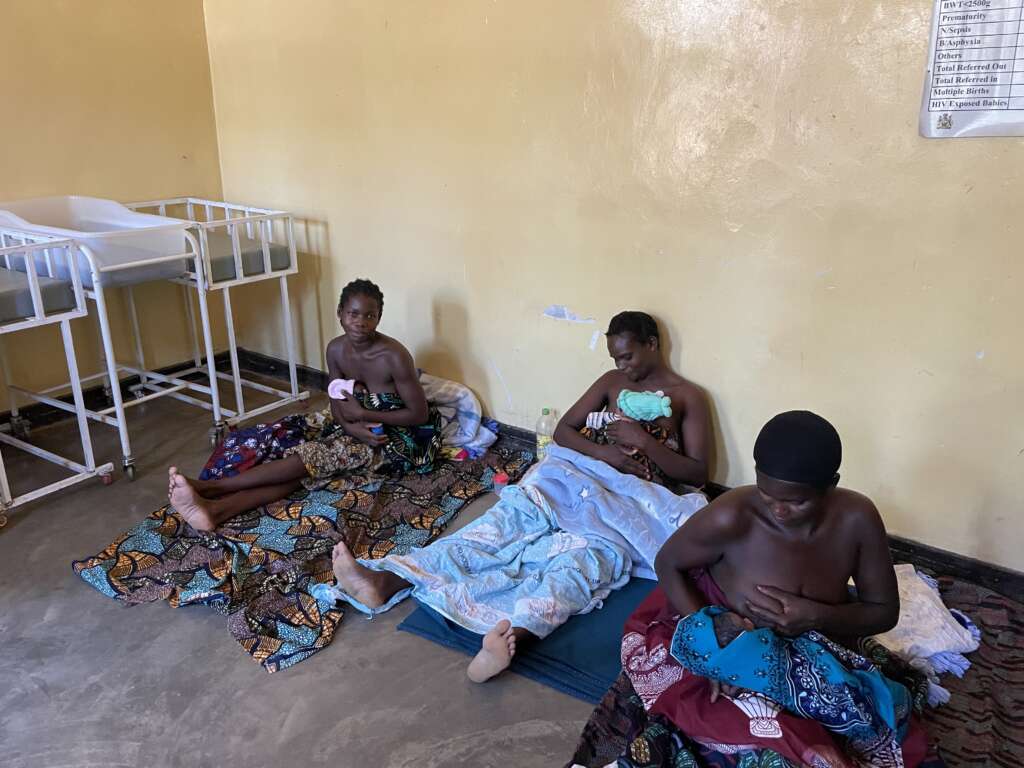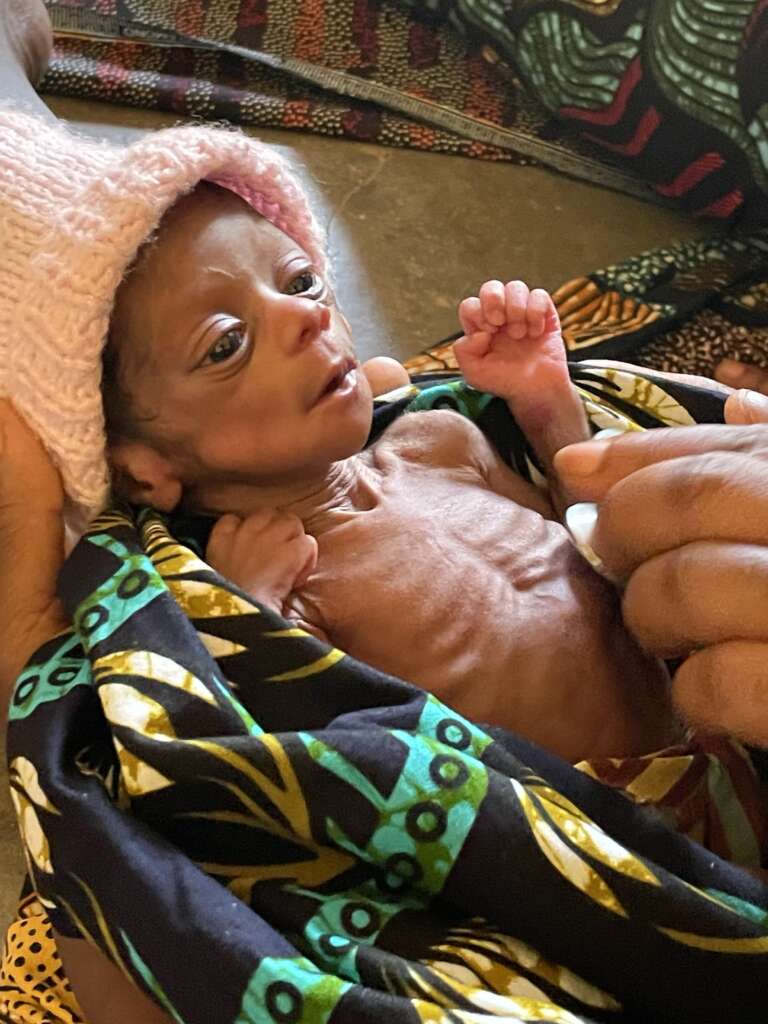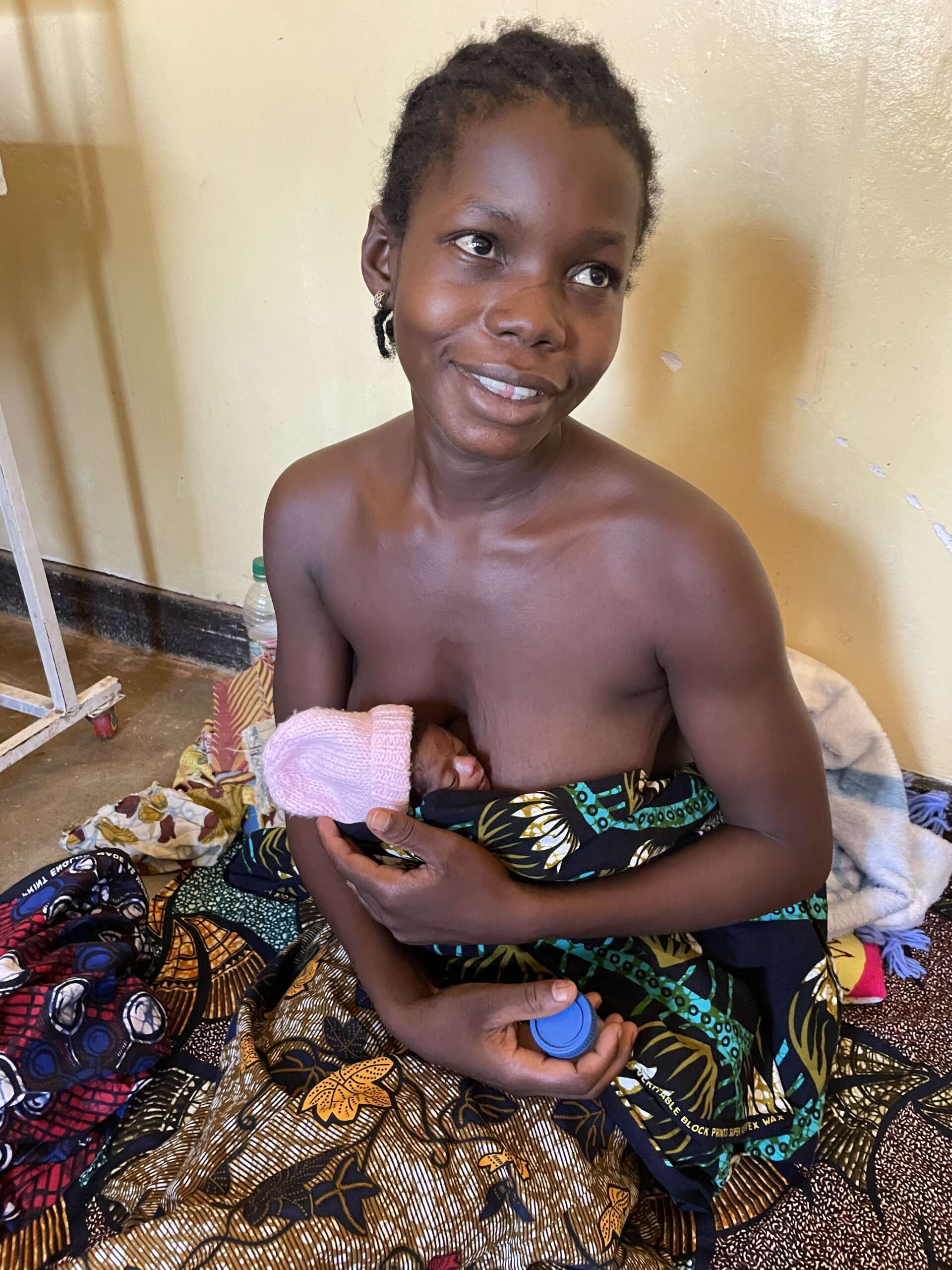This week I have been working in the special care nursery at the hospital. A grand title for a simple room set aside for premature or unwell babies, where they are cared for by their mothers. The special care and intensive care baby units that I have worked in in the UK have had high staffing levels because of the multiple, time consuming aspects of care such babies need. In Malawi Kangaroo care is the main available tool to give these babies the chance to survive.
Initially I saw cots, an incubator and a resuscitaire. However, intermittent electricity and no maintenance/repair facilities mean that these things basically just take up space. There is no continuous oxygen supply and no other respiratory support. Kangaroo care is what is practised. This relies on the mother (or another family member) keeping baby skin to skin with them 24 hours a day. The mothers stay in the nursery. They have no beds or chairs. They simply spread their chitenge (wrap) and sit or lie on the concrete floor. In an area where malaria is rife and woman are given a free mosquito net during pregnancy, it is interesting to note that there are no nets provided, and nowhere to hang your own.
Kangaroo care is prescribed in Malawi for all babies below 1500g and/or estimated to be less than 34 weeks gestationhttps://www.medbox.org/dl/5e148832db60a2044c2d38cc. The benefits of skin to skin contact between parents and their baby is something I discuss with all clients in the UK during pregnancy. We know that these benefits include helping the baby to regulate their body temperature, reduces stress hormones, supports sharing of the family protective skin biome, and can prompt babies to continue breathing. We also see it as a beneficial in building the bond between parent(s) and the baby and it fits well with our aim of supporting responsive feeding. International guidance suggests that a period of skin to skin contact should be facilitated for all but the most unstable premature or sick babies https://www.unicef.org.uk/babyfriendly/baby-friendly-resources/implementing-standards-resources/skin-to-skin-contact/. In Malawi I am observing the reverse – mature, vigorous babies are commonly taken from their mother and wrapped within moments, whereas for the sickest and most premature this is the only available intervention.
Whilst in the UK I encourage extended periods of skin to skin contact for all babies in the early days after birth, it is hard to image sitting on a concrete floor for days at a time doing this. The woman’s “guardian” (family member who accompanied her to the hospital) is expected to continue to provide food for the mother, to take her place from time to time to allow her toilet breaks. The guardian washes the mother’s clothes and the wraps used as nappies for the baby etc. Remember that these are people often far from home who are staying in a basic shelter on the hospital site and cooking over an open fire, collecting water from the hand pump, washing clothes and nappy cloths in a bucket of water.

The baby in the main picture above was born at an estimated 27 weeks. In pregnancy gestation is taken from the mother’s reported last period or her fundal height. There is no scanning facility. In Malawi a baby born before 28 weeks is considered non-viable and so she was declined access to the maternity unit. I find this tough to understand, given how unreliable gestational age estimate is from these estimates. However, this little one has surprised everyone, and is now almost 3 weeks old. Clinical examination suggests that she was between 25 and 27 weeks.
Weighing only around 800g at birth, she has remained skin to skin with her mum or grandmother throughout this time. Somehow she has defied all predictions, has periods of alert interest in the world and has even gained a little weight. In the UK she would be tube fed, because her sucking reflex isn’t yet effectively developed. This can enable nutrition without expending energy which is needed from growth. We have no feeding tube here and so the decision was made to offer expressed breast milk as cup feeds. As with so many things, I find it astonishing that with the minimal hygiene measures (the cup is simply rinsed with tap water) such a technique doesn’t immediately lead to major problems. Initially her ability to lap milk was very poor, but spending time with her & her mum this week I have watched his skills developing. If you have not come across the technique of cup feeding a tiny baby, this is a really valuable video https://globalhealthmedia.org/videos/cup-feeding-your-small-baby/
The future is far from certain for this little one, but it is beautiful to witness mum and baby sharing so much love. Without kangaroo care, she would have had no chance of life.



4 Comments
What a fantastic blog of your week with the premature babies & their Mamas 💜
Have you watched any clips from Nils Bergman, his research shows kangaroo care can have a hugely positive impact on these babies. Thanks again for sharing 💜
Reading this and feeling awe, respect , admiration for these women in Malawi. I can see how important the Guardian role is as Kangaroo care requires 100% of the mum’s time/attention.
This is incredible Angie! It must be so challenging for you having access to unlimited resources in the UK and very little where you are now in Malawi. Fascinated to read about Kangaroo care in more detail!
Very emotional post!